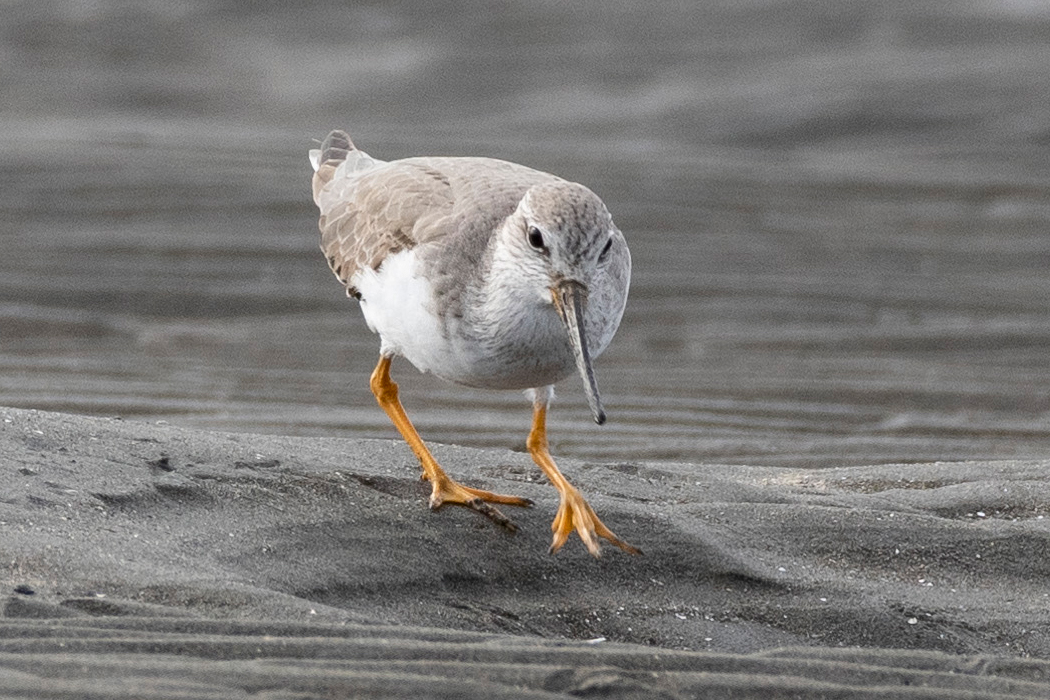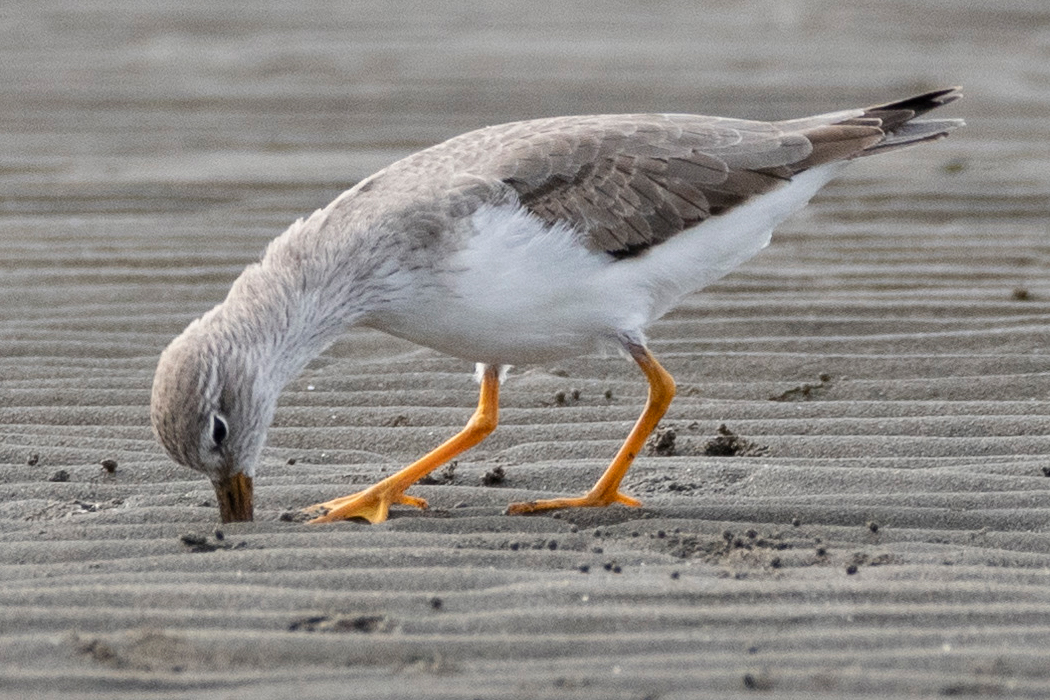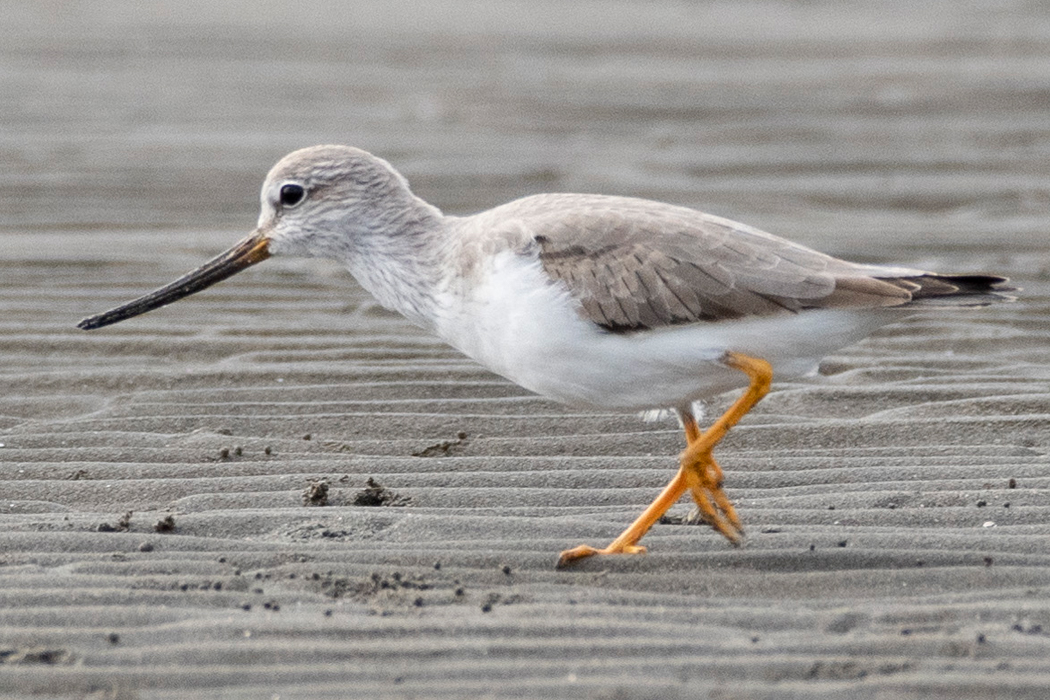
Terek Sandpiper
The beak is upturned.
| Scientific name | Xenus cinereus |
| English name | Terek Sandpiper |
| Japanese name | 反嘴鴫 |
| Classification | Aves |
| Classification details | Charadriiformes Scolopacidae |
| Full length | 22-25cm |
| Distribution | Eurasia, Africa, coastal areas of Australia. |
Characteristics
A sandpiper with a long, upturned bill. The color of the beak is lead. The upper surface of the body is slightly pale brown, and the belly is white. The legs are bright orange. It has a white eye ring.
Call
It makes a high pitched whistle-like whistle.
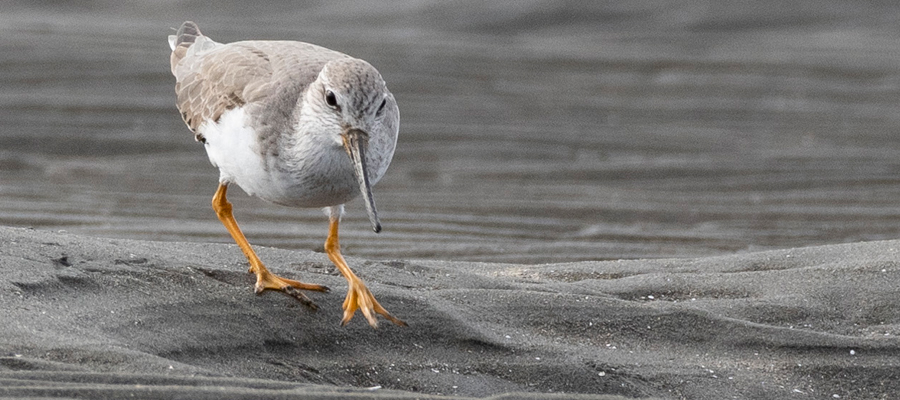
Ecology
They come to Japan as migratory birds in spring and autumn. It is found on tidal flats and sandy beaches, and preys on small crustaceans such as crabs. They are solitary except during the breeding season.
Habitat
Sanbanze, Funabashi City
This photo was taken early in the morning at the tidal flats of Sanbanze. It was walking alone on a tidal flat with many daizen and oystercatchers. It foraged by sticking its beak into the sand.
Pictures
Introducing a picture of Terek Sandpiper.

Picture book

Great Crested Grebe
crested grebe......ead more.

---
The species name comes from the German Dönitz who collected it.......ead more.
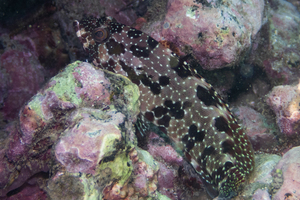
Starspotted grouper
white spots scattered in a stone wall pattern.......ead more.

Mute Swan
There is a hump at the base of the beak.......ead more.

Purple Heron
Bluish purple color.......ead more.

